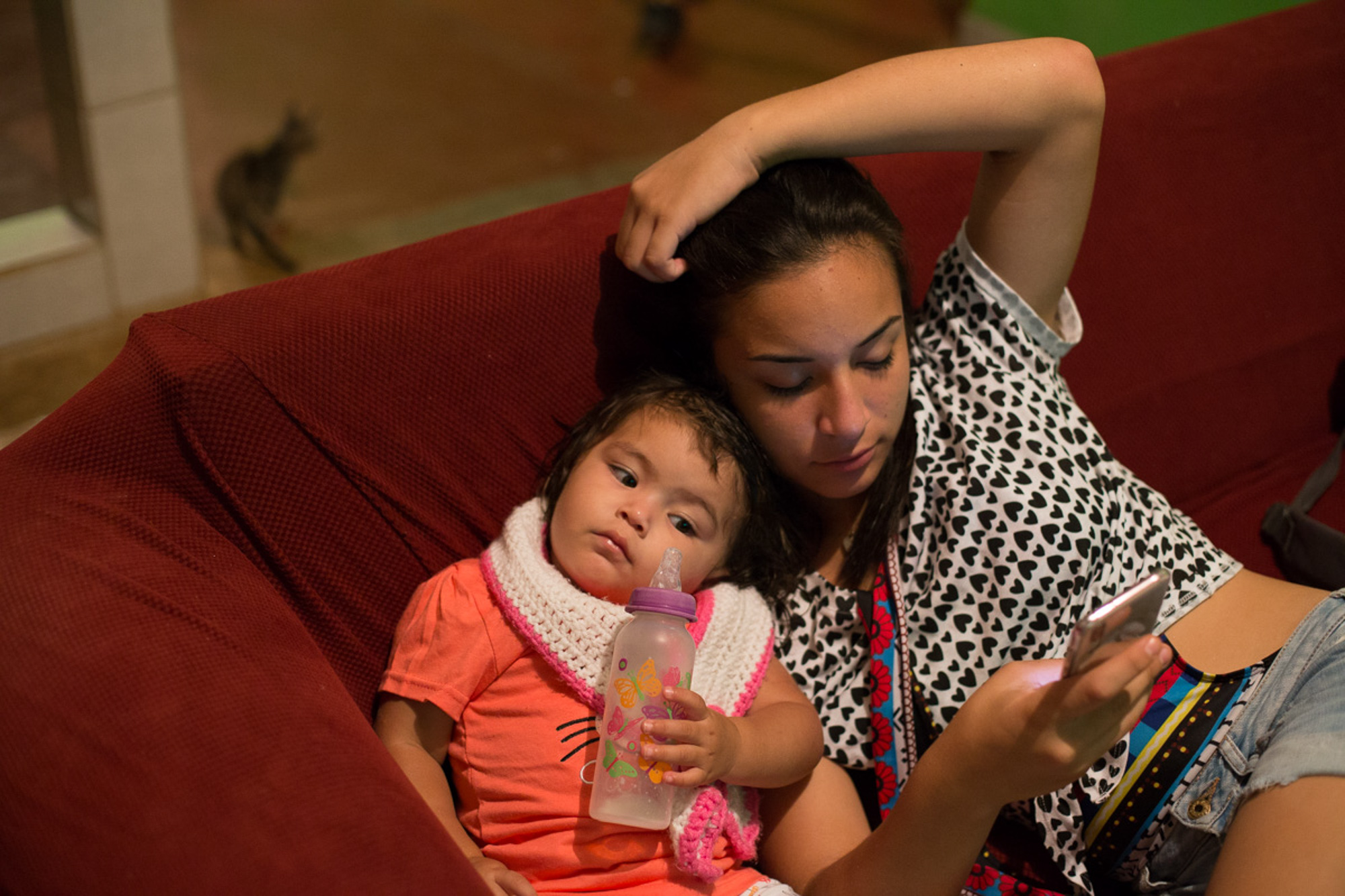[modula id=”4288″]
“Before I had Gresley, I was so eager to meet her. What would she be like? Who would she be? How would she turn out? And she came out identical to her father. Now that I’ve had her, it’s different. When she was small she was pretty, all calm. Now she’s big and a bit of a pain. She hits her aunts! It’s a mess,” Wesley says, laughing, during an interview in July 2019. “I got together with him at 13… at 14 I got pregnant, and at 15 I had Gresley. I got pregnant about a month after we got together.”
In Costa Rica, thousands of girls and adolescents become mothers at an early age, like Wesley.
After Sub-Saharan Africa, Latin America has the highest rate of teenage pregnancy in the world. In Costa Rica, teenage pregnancy has declined over the last decade but it continues to be a problem that can’t be hidden. According to the most recent data from the National Institute of Statistics and Census (INEC), there were 265 births to mothers under 15 years of age in 2019, and 7,775 births to teenage mothers between 15 and 19 years of age. Of the total births for that year, 12.5% were to mothers under 19 years of age, down from 14.7% in 2017 and 19.4% in 2012.
Wesley lives in the canton of La Cruz, in the northwestern province of Guanacaste. This canton has historically maintained a high teenage pregnancy rate. In 2014, 26% of deliveries in La Cruz were to mothers under 19 years of age. In August 2017, the United Nations Population Fund (UNFPA) and Costa Rica’s Social Security (CCSS, or la Caja) began offering a subdermal contraceptive implant, which is placed under the skin of the arm, as a contraceptive option, in order to reduce these pregnancies. In 2019, La Cruz reported 421 births including 66 were to mothers between the ages of 15 and 19, decreasing the rate of representation of that group from 26% to 15.7%.
Although this border canton has shown a considerable decrease in pregnancy in girls and adolescents, four of Guanacaste’s 11 cantons are within Costa Rica’s top 12 cantons for percentage of births to mothers under 19 years of age.
YOUNG KINSHIP
I met Wesley when she was 15 years old, 41 weeks pregnant, through Daniela, an adolescent mother participating in the Adolescent Motherhood Life Stories project. This project was carried out in conjunction with the United Nations Population Fund (UNFPA). Both women belong to a group managed by the National Children’s Trust (PANI) that works to prevent violence.
Wesley’s mother, Marjorie, received me at her home in La Cruz de Guanacaste in July 2017. There, for several days, I was able to live with this family and learn about the challenges they were facing. A single mother was the head of the household, with five dependent children and a granddaughter on the way. The family’s experiences with poverty, adverse family contexts, and violence made each day a challenge.
Although the outlook has improved, we cannot remain indifferent to teenage pregnancy. Each of these mothers, adolescents and girls, will see their lives affected, increasing their vulnerability to other adverse factors. However, this issue also affects the lives of others, including minors who are born to young parents who are not yet emotionally mature. These parents do not have the conditions they need to get ahead.
My college graduation project sought to showcase a fragment of Wesley’s everyday life and her motherhood. My chronicle of Wesley’s motherhood began with her pregnancy in 2017 and continued throughout 2019. The project is still underway.
Although teenage pregnancy is a national and regional public health problem, each case is unique and singular, each life story particular.
My documentary photography work with Wesley is a sample of one of many of these cases. As a photographer, I have been able to witness many faces of this reality.
Relations between older men and schoolgirls or teenagers; women who from a young age were trapped in cycles of poverty; and the caregiver role that is imposed on many women from girlhood, are all factors that I have observed in the stories of teenage mothers I have visited. I’ve also observed our society’s great debt to these mothers when it comes to education, health and family systems that could provide open, honest and shame-free sex education.
As a society, we must make an effort to make this issue visible so that all actors in society can at least consider making a difference in some way. We cannot let this problem, which directly affects our younger population, continue to occur.
[modula id=”4286″]





